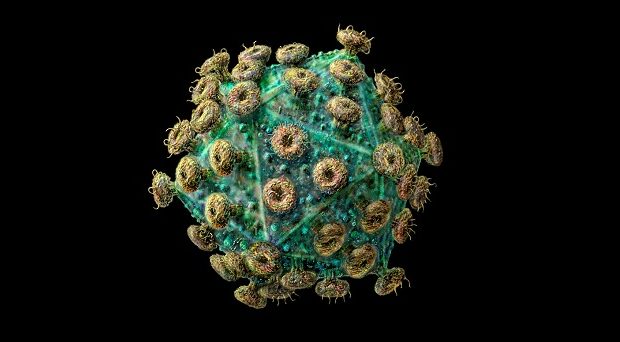
Approximately 20-30% of HIV-1 infected individuals develop broadly neutralizing antibodies (bnAbs) after years of infection, but knowing how to induce these bnAbs in a vaccination setting remains elusive. Studying the development of bnAbs in natural HIV-1 infection might unravel how bnAbs could be elicited by vaccines.
In previous studies, it was demonstrated that the development of bnAbs is associated with a phenotypical similar immunologic profile that has been seen in patients who develop autoimmune diseases including higher frequency of T follicular helper (Tfh) cells in the periphery [1,2], lower levels of T regulatory (Tregs) cells and an increased frequency of autoreactive antibodies in the plasma.
These findings suggest that HIV-1 infected individuals who generate bnAbs may have less robust immune regulation of their antibody responses but the exact events that precede bnAb development during HIV-1 infection remain unclear. In addition to Tfh and Tregs as key immune adaptive controllers of antibody responses, natural killer (NK) cells, known for their role as effector lymphocytes of the innate immunity, also have immunomodulatory effects and appear to promote and/or maintain adaptive immune responses in inflammatory/autoimmune conditions and infections[3,4].
To understand the underlying mechanisms that lead to bnAb development, Bradley et al. performed a comparative transcriptome analysis on peripheral blood mononuclear cells (PBMCs) of HIV-1-infected individuals who developed bnAbs (bnAbs+) and compared this to HIV-1 infected individuals who did not develop bnAb responses (bnAbs-).
In this study, the authors found that the gene RAB11FIP5, which encodes for a Rab effector protein associated with recycling endosomes, is overexpressed in the NK cell population of bnAbs+ individuals. Moreover, RAB11FIP5 expression was positively correlated with the breadth of antibody neutralization in HIV-1 infected individuals.
Overexpression of RAB11FIP5 was associated with altered NK cell functionality which displayed decreased cytokine release (IFNγ and TNFα) and degranulation (CD107a). The altered function of NK cells in bnAbs+ individuals was associated with an exhausted phenotype of their NK cells, and especially by the redistribution of their effector killing NK cell population (CD56dim) towards an anergic NK cell population (CD56-), which correlates directly with RAB11FIP5 expression and the breadth of neutralization.
Vaccination strategies should consider to restrain the natural killer cell responses to promote broadly neutralizing antibodies development.
Based on these results the authors theorize that the altered functionality of the NK cells may lead to the preservation of the Tfh cell compartment in bnAbs+ individuals leading to a better development of antibody responses. In agreement with this hypothesis, Bradley et al. showed that activated NK cells from healthy individuals can reduce the Tfh cell population and subsequently impair B cell help in vitro.
These findings emphasize the importance of the NK cell as one of the key regulators of the Tfh cell responses that drive bnAb development. Vaccination strategies should therefore consider restraining the NK cell responses to promote bnAb development. To achieve this goal there is a need to understand whether the regulation of Tfh cells by NK cells is restricted to HIV-1 infection and autoimmunity or that it also happens in healthy individuals.
Future vaccination studies should, in addition to B and T cells, examine NK cell responses triggered by immunization and compare these findings with the responses observed after infection. In order to limit NK cell function during immunization, future research should further understand the NK cell dysfunction in bnAbs+ individuals and how to induce this.
Another approach to consider is to target the specific mechanisms leading to Tfh depletion by NK cells. Finally, anti-IL-15 antibodies have shown to mediate NK cells depletion [5,6] and may potentiate bnAb production.
The work by Bradley et al. has considerably increased our understanding of the role of innate immune system in the development of acquired immunity, which opens new doors to regulate the humoral response and broadly neutralizing antibody development by HIV-1 vaccination.
Comments